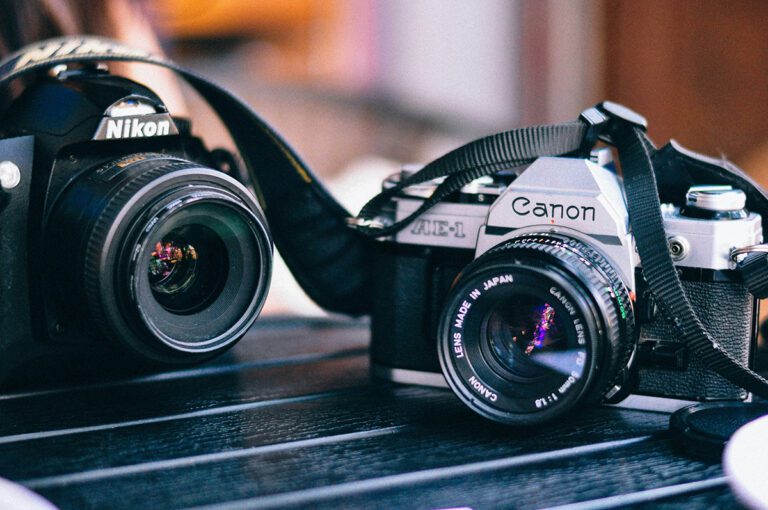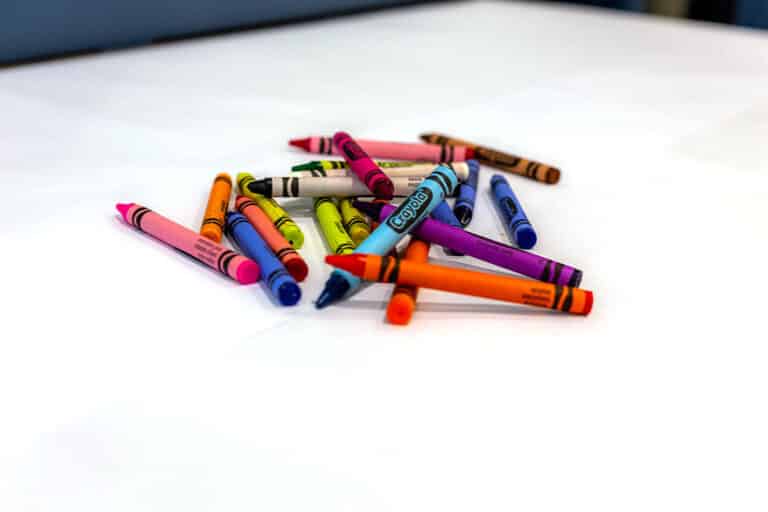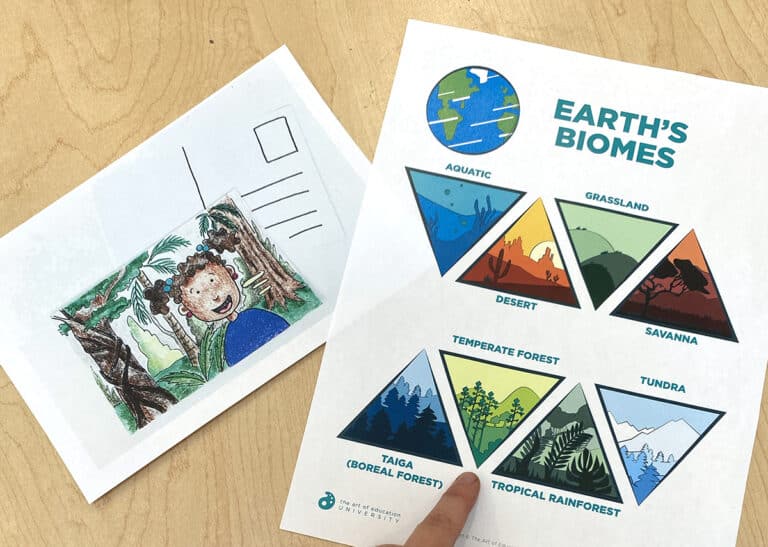As you prepare students to become lifelong learners, it’s important to equip students with a variety of skills. 21st-century skills are those students need to navigate an ever-changing, global society. Many schools districts are asking teachers to use these skills in their curriculum. The good news for art teachers is that we teach a unique subject where students can creatively apply what they have learned in other classes.
So, how can we facilitate the 21st-century skills in the art classroom?
Communication and Collaboration
What are they?
Communication is a necessary skill we use every day. In art class, students can communicate verbally, as well as writing, and most often, visually. They decipher meaning from contemporary and historical artworks while creating a message in their own unique projects.
Collaboration is the ability to work together effectively with others. In the art classroom, collaboration is incorporated through group projects.
In The Art Room:
One way to encourage communication in the art room is to show students how artists have communicated throughout history. Introduce examples of cave paintings, Egyptian art, Greek pottery, etc. Students can see how art allows us to communicate information visually. Then, they can apply this knowledge of a visual narrative to inspire their own artwork.
Try having your students work in groups or pairs to create an altered photograph. Explain to students that their altered photograph should convey a snapshot of a story. Students will need to be able to act as designers and photographers to complete this project.

Partners or groups can create scenes of battle, friendship, or celebration. Show them examples from Greek pottery depicting scenes from mythology. The whole story isn’t necessarily featured, only a key moment or scene. Each student should begin the project with an initial idea for their story, also called a narrative. Some of these ideas may evolve through the collaboration process as their peers offer helpful suggestions. Allow students time to communicate and feel comfortable making changes as they work.
- First, the project designer needs to envision how the finished photograph will look.
- Next, the designer will need to communicate their vision clearly to their photographer.
- Then, have the designer create a rough sketch of what they envision to give their photographers an idea of composition, angle, and distance.
- Finally, the photographer will use the sketch to best capture the designer’s idea with the camera.
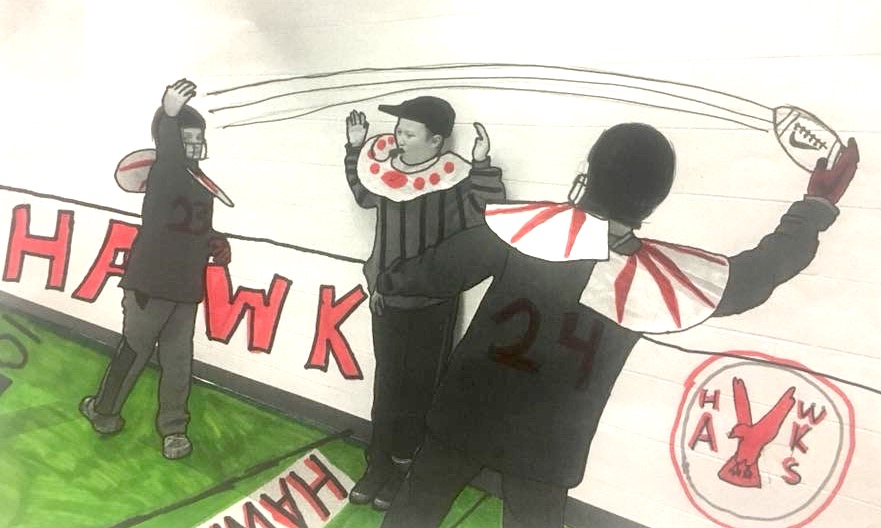
Innovation and Creativity
What are they?
As art educators, we know innovation and creativity go hand in hand. Innovation and creativity will solve the problems of today and the future. Our students need to be prepared with new solutions to both old and new problems. In the art classroom, we encourage our students to think creatively with every single project. Their ideas inspire us as educators to keep innovating and creating!
Thinking creatively comes naturally to some students, while others struggle to generate new ideas. Try to inspire creativity by providing a variety of examples, resources, and processes. Students may develop ideas better through brainstorming, collaboration, and the application of personal experiences.

In The Art Room:
Consider giving students a simple project with a few parameters and lots of opportunity for creative additions. Use the inspiration of a famous artwork or tradition. For example, introduce students to The Nian Monster for Chinese New Year. While students won’t be making replicas of Chinese parade decorations, each student can make an original paper dragon based on their own creative legend.
- First, have students write a story about their dragon. The stories can range from grand adventures to endearing friendships.
- Next, students may work together to write stories that correspond with one another. As we already know, collaboration can inspire some very creative ideas!
- Then, students can create a paper dragon using a variety of materials as unique as their written story. Some dragons may have elaborate tails, beards, or wings, while others might appear ferocious with two heads and sharp teeth. The colors, shapes, and lines should reflect the dragon’s personality and story details.
- Finally, have your students share their stories with each other.
Critical Thinking and Problem-Solving
What are they?
Critical thinking and problem-solving might sound like topics for a scientist or an engineer, but they can also easily be found in the art room! Critical thinking and problem-solving use both the right and left sides of the brain.
In The Art Room:
Try giving your students a sculpture project with fewer instructions and added challenges.
- First, introduce your students to three-dimensional works by Auguste Rodin, Henry Moore, and Claes Oldenburg.
- Next, have your class brainstorm what the sculptures might be made of and how the artist communicated meaning.
- Then, after the students’ discussion, ask them to create an original sculpture in groups of three to five. Your minimal instructions should be to design a free-standing sculpture out of cardboard. The colors, lines, and shapes are to reflect a mood chosen by the students. You could incorporate some literature by reading the Dr. Seuss book, My Many Colored Days, as an excellent example of how we interpret different colors as specific moods.
- To continue, students will work together to agree on a single mood and decide how to best communicate that emotion with shapes, colors, and lines. They will collaborate as they cut their shapes out of cardboard and paint them with tempera paint. Once the shapes are dry, students may add lines with oil pastels.
- Finally, the challenge: Each group should try to come up with a way of assembling the pieces to create a free-standing sculpture without the use of glue! Some students may try using pipe cleaners and hole punches to connect the shapes. While others may join the shapes by cutting slits in the cardboard to balance pieces against one another.
This project can be extremely messy, wild, and at times, overwhelming. You could easily eliminate some of the issues by being more hands-on and giving specific demonstrations, but the point of this project is to encourage your students to do some of that learning on their own through the process. As their teacher, you do not always have to solve the problems for them. Instead, encourage students to explore, think critically, and problem solve collaboratively.
Technology and Informational Literacy
What are they?
The abilities to safely and effectively navigate online and use technology for the greater good are essential to today’s students. Technology and informational literacy have become more and more integrated into the arts. Through internet research, software programs, and social media, students can connect with art content like never before.
In The Art Room:
Use artists affiliated with the Harlem Renaissance to inspire a research-based art project:
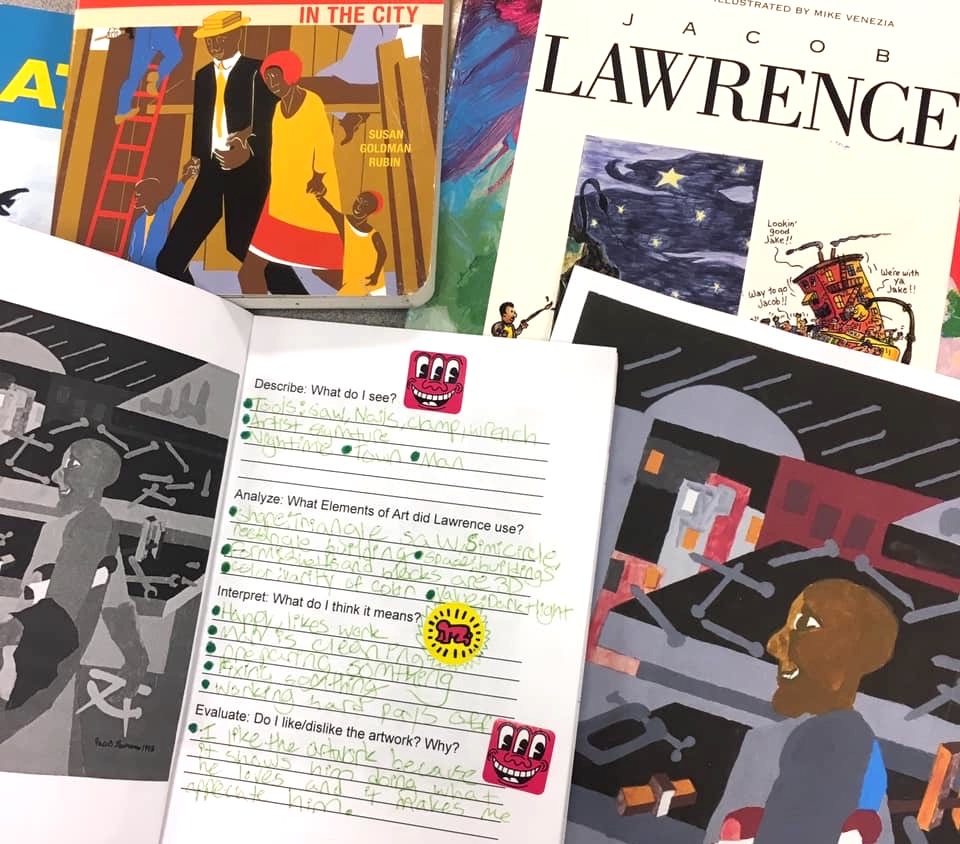
- First, introduce students to influential musicians and poets of the Harlem Renaissance.
- Then, rather than explaining an artist’s or culture’s perspective yourself, look for a primary source online. Use technological resources like YouTube to show students how good content can be used to learn. Students will appreciate hearing information directly from the source. For a Harlem Renaissance unit, you may choose this video featuring an expert professor from the University of Colorado in Boulder. The video was produced by teens, which may inspire your students, as these young filmmakers created the documentary for the National History Day competition.
- Next, ask your students to research information about three specific artists of the Harlem Renaissance: Jacob Lawrence, Romare Bearden, and Lois Mailou Jones, or discover their own. At the end of class, students will answer questions about their chosen artist and reflect on this information in writing.
- Finally, each student will choose one artist to inspire an original art project. When the projects are completed, students can explain, in writing, how the artist inspired their work. This type of project helps show how well students can apply research.
Final Thoughts
21st-century skills are essential for students to succeed in the Information Age. The National Art Education Association agrees, “the visual arts provide opportunities for all students to build their skills and capacity in what the Partnership for 21st-Century Skills calls ‘Learning and Innovation Skills,’ specifically Creativity and Innovation; Critical Thinking and Problem-Solving; and Communication and Collaboration.”
As art educators, we already promote many of these 21st-century skills every day, as we focus on individual student needs and project-based learning. In doing so, we can best prepare students for today’s global society.
How do you promote 21st-century skills in the art room?
What projects are encouraging your students to think critically and problem solve?
How are students collaborating in your art room?
Magazine articles and podcasts are opinions of professional education contributors and do not necessarily represent the position of the Art of Education University (AOEU) or its academic offerings. Contributors use terms in the way they are most often talked about in the scope of their educational experiences.


